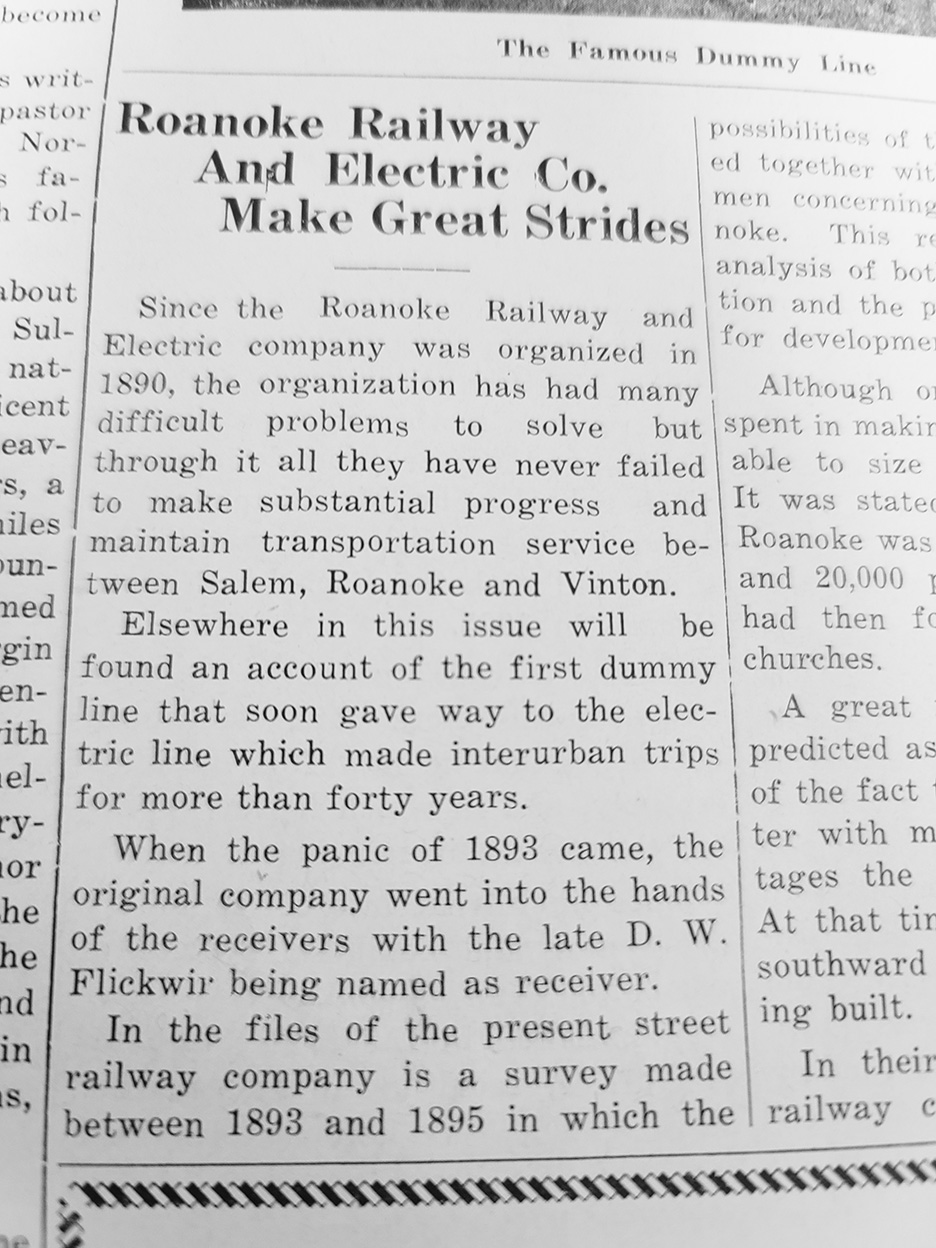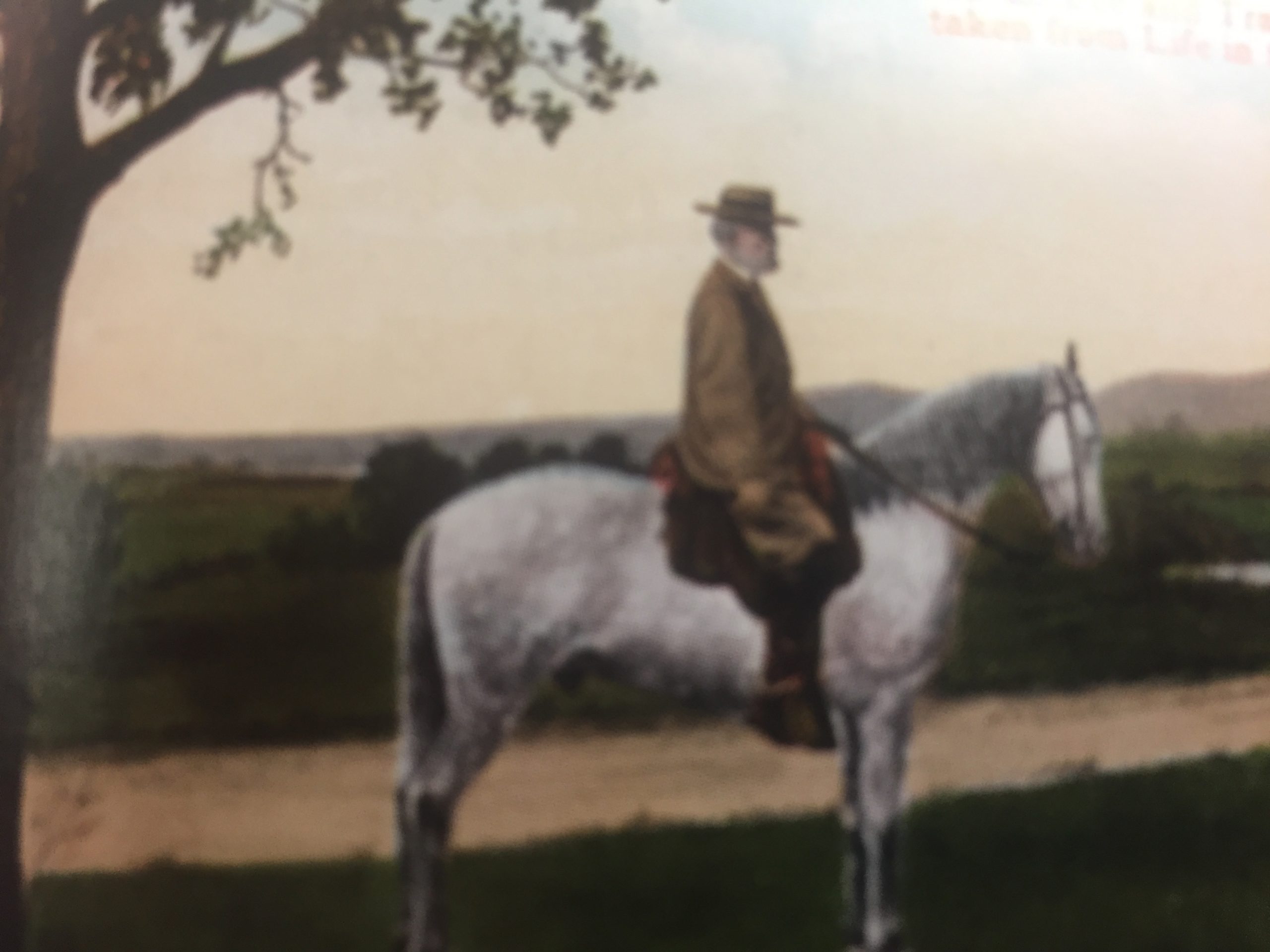
From the 1938 centennial edition of The Times-Register
Since the Roanoke Railway and Electric company was organized in 1890, the organization has had many difficult problems to solve but through it all they have never failed to make substantial progress and maintain transportation service between Salem, Roanoke and Vinton.
Elsewhere in this issue will be found an account of the first dummy line that soon gave way to the electric line which made interurban trips for more than forty years.
When the panic of 1893 came, the original company went into the hands of the receivers with the late D. W. Flickwir being named as receiver.
In the files of the present street railway company is a survey made between 1893 and 1895 in which the possibilities of this line were predicted together with the views of those men concerning the future of Roanoke. This report showed a keen analysis of both the streetcar situation and the possibilities of Roanoke for development.
Although only three days were spent making this survey, they were able to size up the situation well. It was stated in the report that Roanoke was a city of between 17,000 and 20,000 people. The community had then four banks and fourteen churches.
A great future of Roanoke was predicted as it was said that because of the fact that it was a railroad center with many other natural advantages the city was bound to grow. At that time the road from Roanoke southward into the Carolinas was being built.
In their description of the street railway company of Roanoke they called the service “slow and seldom.” Cars in the city service which were hauled by mules were said to be in bad condition. The expenses of operating the city line was given as being in excess of receipts but the prediction was made that this condition would not prevail for long.
Salem was described as a town of about 4,000 people with the property between the town and Roanoke capable of development. Vinton was said to be a town of about 600 people and growing rather rapidly.
A reorganization of the line was affected in 1899 with H. S. Trout as president. Junius B Fishburn next acquired control of the company and for three years he was president of the Roanoke Railway and Electric company.
In the years that followed some outside capital was induced to invest in this property in order that the experience of the best brains in the country be obtained and the operation of the line become more scientific.
It was the present Roanoke Railway and Electric company that put the first buses into operation. Modern buses are now operated in connection with the street cars and these handsome buses mark a great change from the old dummy line and the mule-drawn vehicles that plied the streets of Roanoke in the early days.
Operating a street car and bus line at the present time is not an easy job, for there are plenty of obstacles in the way of successful operation. However, W. H. Horne, the genial manager of the present company, is a man who always looks on the bright side of things and he is struggling hard to make the properties pay and to give the people the best service possible under existing circumstances.
This year, 1938, marks the 100th anniversary of the Richmond street railway company, where the first completely equipped electric street railway line was established. The first street cars to be seen in an American city was in 1833 in New York but the cars used there were drawn by horses. Electric cars soon followed, and Richmond was the first city in the United States to have a completely operated electric line.
-Prepared by Lisa King





